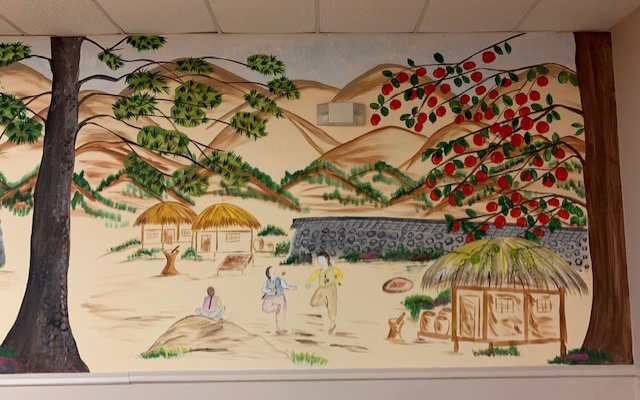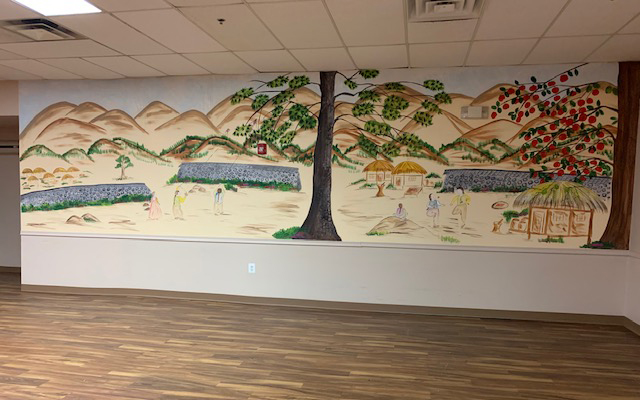
Baltimore's First Koreatown
Baltimore’s Charles North neighborhood, part of the Station North Arts & Entertainment District and home to AA&CC's annual Asia North Exhibition and Festival, is the site of Baltimore’s first unofficial Koreatown, which began to form in the 1960s and was at its height in the 1990s. During its peak, the neighborhood consisted of several Korean-owned businesses, including restaurants, dry cleaners, corner stores, carry outs, a supermarket, gas stations, auto repair shops, wig stores, a rice cake shop, real estate offices, accounting firms, whole sale shops, doctors’ offices, gift shops, social service centers, travel agencies, clothing shops, and liquor stores.
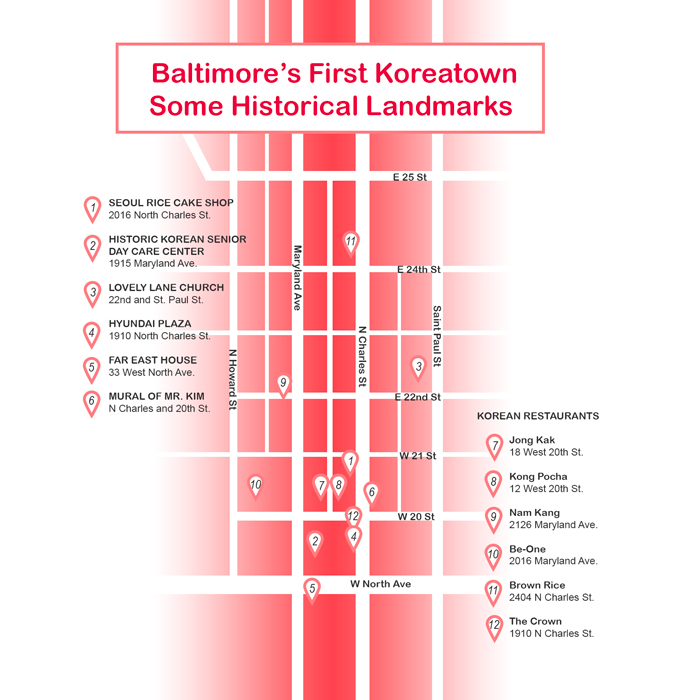
The neighborhood is still home to several popular Korean restaurants. Some historical landmarks include:
Seoul Rice Cake Shop
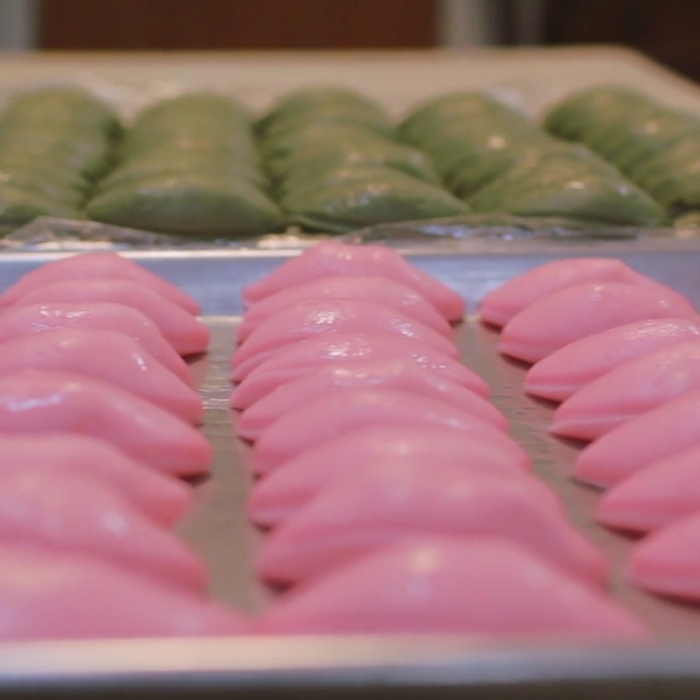
The Kim family established their rice cake business in the late 1970s when they settled in Baltimore. Theirs was the the first Korean business in Baltimore. Initially, the Kims had a restaurant at 12 W. 20th Street and sold rice cakes in the corner of the restaurant. In 1994, they bought the building at 2016 North Charles Street and focused on rice cakes. As the only shop that made fresh Korean-style rice cakes in the region, the family made frequent deliveries throughout the DMV. The man in the mural now overlooking the neighborhood is the shop’s first owner. His wife’s family recipes were used to make the rice cakes. Mr. Kim’s son, Jae Won, later took over the business. The shop operated until 2018, when business slowed down. There is now a Pizza Boli’s at the address.
Watch "A Look Inside Seoul Rice Cake (2013)"
Credit: Paul Kim
Mural of Mr. Kim
This large mural overlooking the neighborhood features the face of Jae Won Kim’s father, who was the first owner of the Seoul Rice cake shop. It was painted by Hendrik Beikirch, a German artist (who also goes by the name Ecb) as a participant of Open Walls Baltimore 2. Open Walls Baltimore 2 was launched in 2014 by Baltimore mural artist Gaia who attended MICA (Maryland Institute College of Arts).
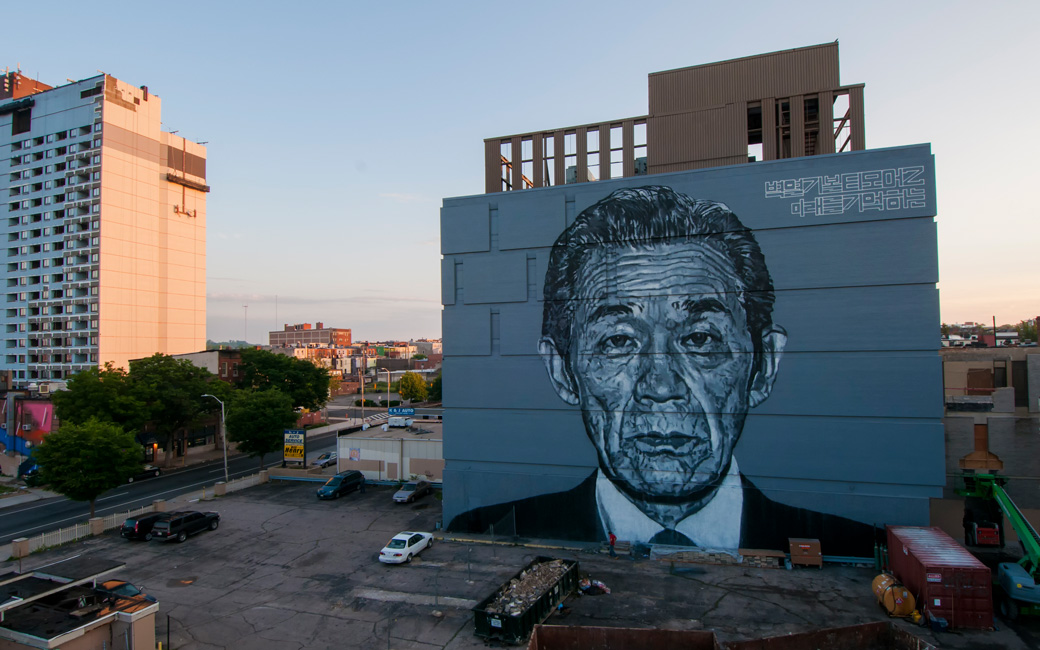
It is the biggest portrait mural ever made on the East Coast. Gaia wanted to paint the face of a Korean resident, visited the rice cake shop, and asked if he could paint the face of Mrs. Kim, Jae Won’s wife. The Kims declined that request, but then Gaia saw a photo of Kim’s father, asked if he could use it for the mural, and they agreed.
A phrase in Hangul (Korean alphabet) appears on the top right corner of the mural, which roughly means, “Wall opening Baltimore Z/ Remembering the Future.” This is the result of a language barrier: Ecb asked Jae Won Kim for a Korean translation of something like, “Baltimore that remembers the future and Open Walls.” The artist proceeded to transfer Kim’s written translation to the mural, but he mixed up the phrases, connected them incorrectly, and painted a “Z” instead of an “N.” Jae Won Kim assures us that, despite the mix-up, Korean readers can still get the gist of the meaning. The mural is located at North Charles and 20th Streets.
Historic Korean Senior Day Care Center
Previously located at 1915 Maryland Avenue, this center is now the site of the North Avenue Market. A Russian immigrant originally established this center for seniors of all ethnicities. In 1984, Dr. Jane Lew and Mr. Hosul Pak arranged the purchase of the building by the Korean Association of Baltimore. Major financial support was provided by Mr. Chang Ho Kim, Dr. Jane Lew, Mr. Han Il Bae, Baltimore City, Korean Business Association, Korean Service Center, Korean Association of Baltimore, and two anonymous individuals.
It became a center where parents of local Korean business owners could stay during the day — a convenient way for the business owners to check on and visit their parents during
the workdays. In 1999, the center moved to Federal St. near Greenmount Ave. That location
also recently closed in 2022.
Lovely Lane Church
Located at 22nd and St. Paul Streets, this is the oldest church in Baltimore. From 1966 to 1967, a small community of Korean scientists, engineers, professors, doctors, and other professionals rented the space for the worship services of their United Church.
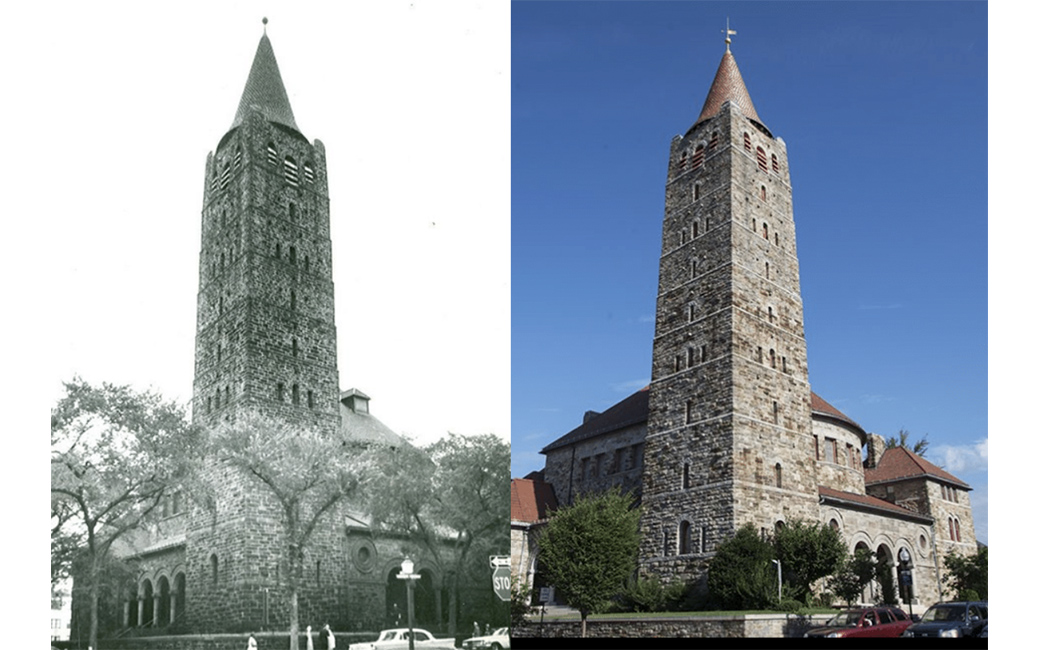
Mr. Charles Pang — whose father was a minister in Korea — was instrumental in establishing the church. As more Korean immigrants settled in the Baltimore area and the Lovely Lane Church embarked on a remodeling project, the congregation subsequently moved to alternate locations and expanded into several branches. These include the American Methodist Church in Glen Burnie, the Wilson Memorial Methodist Church on University Parkway, and the Bethel Presbyterian Church in Ellicott City. The community established a Korean language school for their children at the Wilson Memorial Methodist Church location.
Hyundai Plaza
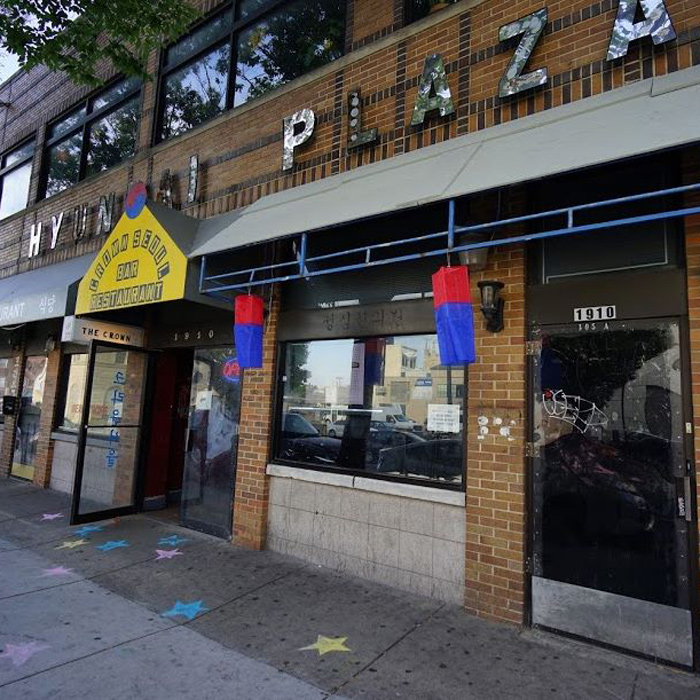
Arriving in 1955, Jane Younghee Lew was one of Baltimore’s first Korean immigrants. She was a doctor of internal medicine who cared for Korean senior citizens in a small office on North Avenue with her assistant, Mrs. Bae. Dr. Lew purchased the property at 1910 North Charles Street after a fire in the mid-1980s and remodeled it as a mini-mall containing an office, clothing shops, social service center, herbal medicine office, travel agency and a restaurant.
A replica of a Silla period gold crown was displayed near the entrance to the restaurant, which was named Gaya. (Silla was a kingdom located in southeastern Korean peninsula during the 6th-9th centuries. Gaya was another Korean kingdom, which was contemporary with and located west of Silla.)
The Crown Bar and Restaurant, which was located there from 2013-2024, derives its name from the crown displayed at the former Gaya restaurant.
Far East House
The first Korean supermarket in Baltimore was located at 33 West North Avenue. Joe Squared is located there today.
Korean Restaurants
- Be-One. 2016 Maryland Avenue. (The name of the restaurant derives from Biwon, a secret garden in the Royal Palace
in Seoul.)
- Brown Rice Korean Grill. While this original location at 2404 North Charles Street is permanently closed,
Brown Rice continues to operate its stall, Be.bim Korean BBQ, at the R. House food
hall (301 W 29th Street) nearby in the Remington neighborhood.
- The Crown. 1910 North Charles Street. (Permanently closed.)
- Jong Kak. 18 West 20th Street. (The name of the restaurant derives from an enclosed bell in
front of the old royal palace in Seoul. Learn more below.)
- Kong Pocha. 12 West 20th Street.
- Nam Kang. 2126 Maryland Avenue. (Permanently closed.)
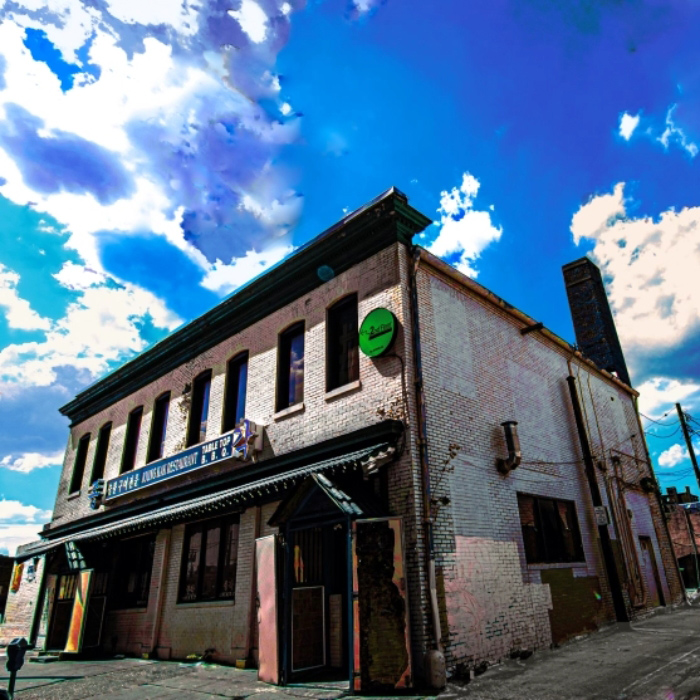
The Crown and Jong Kak
Delve into the histories of two of the most popular restaurants at the crossroads of food and art in Baltimore's Koreatown.
Learn More
Special thanks to Jack Danna, Dale Dusman, Angela Lee, Michelle Lee, Ock Kyung Lee, Paul Kim, Matthew Park, Michael Young, and Mike Shecter for their assistance with compiling this history.
References
- Apperson, Jay. 1997. “Korean-American Center Proposed Projects Would Include Grocery, Ballroom,” The Baltimore Sun. October 17.
- Lee, Seola. 2015. “Jae Won Kim, Seoul Rice Cake owner, whose father's portrait looks over Station North.” Baltimore City Paper. June 2.
- Lew, Jane Y. Lee. 2011. Gamsa Halsu Isseoseo Haeng Bok Hae, I Was Happy for Thanking It, Seoul, Korea: Chorok Nakta Publishing Co. (In Korean)
